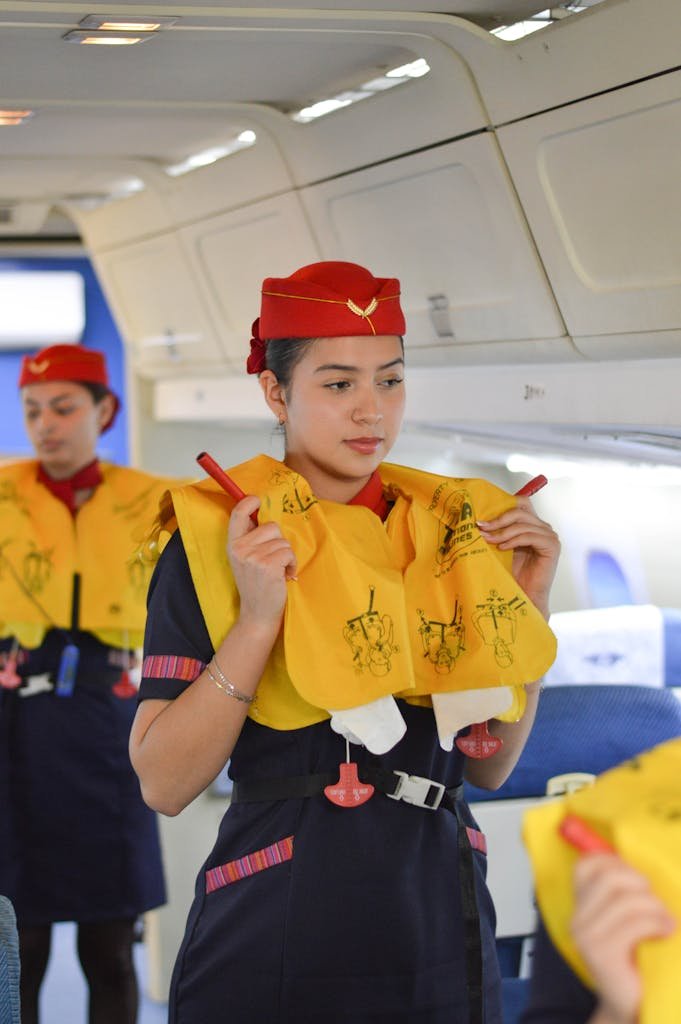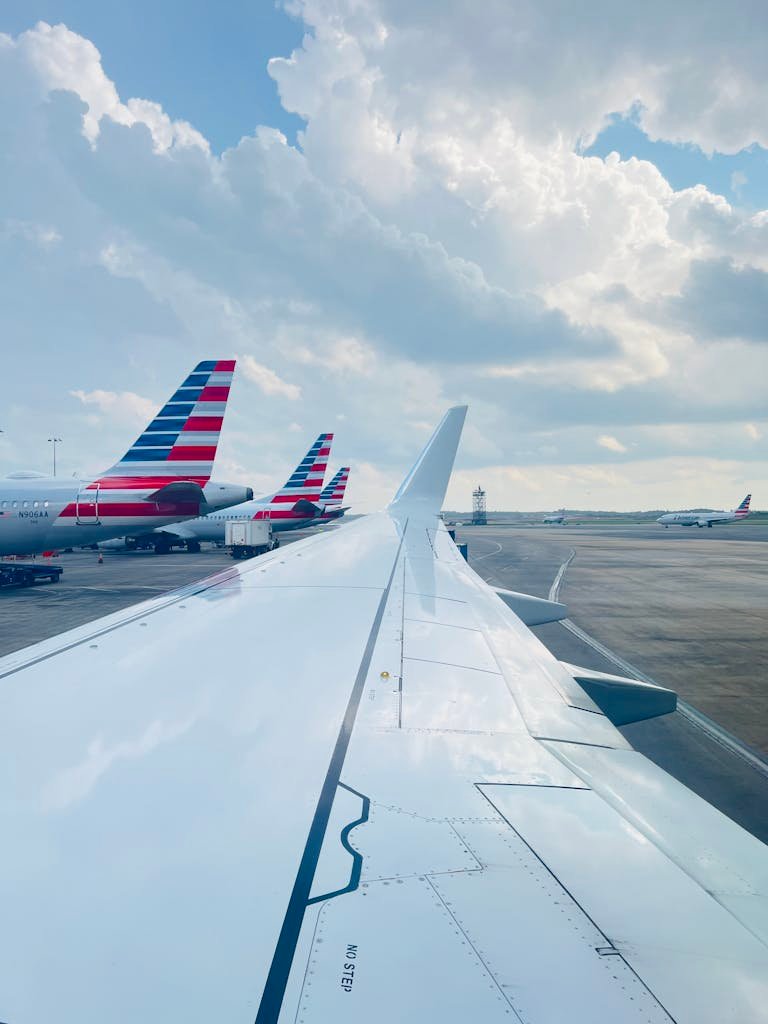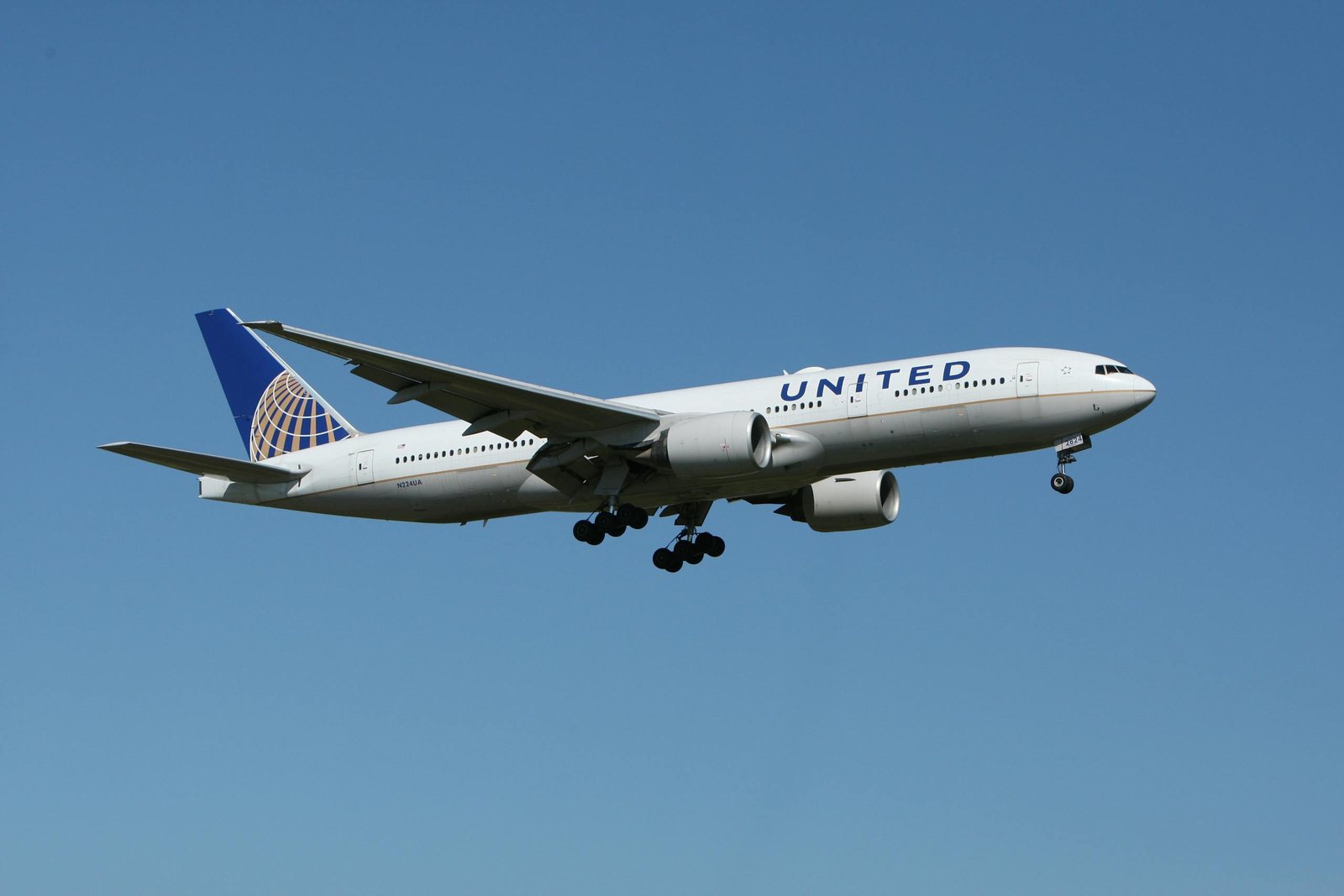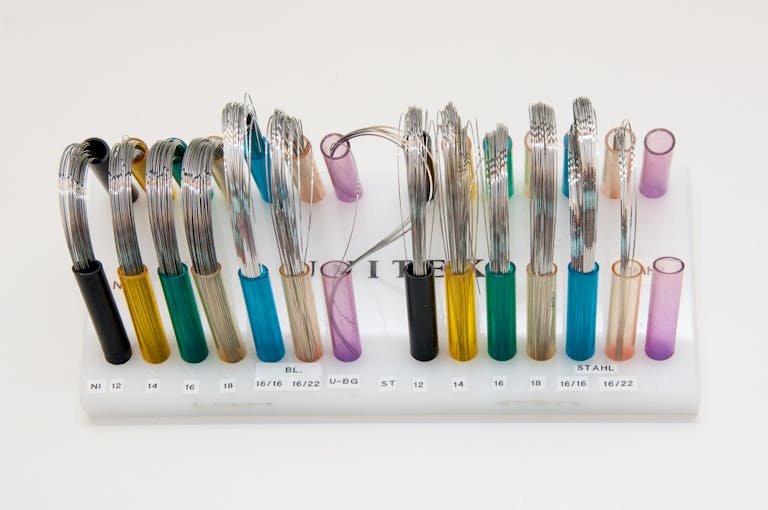Shocking United Airlines Flight UA770 Emergency Diversion: A Riveting Case Study of Crisis and Safety
Introduction: The Unexpected Turn of UA770
On May 27, 2025, United Airlines Flight UA770, a Boeing 787-9 Dreamliner en route from Barcelona to Chicago, faced a mid-air crisis that led to an emergency diversion to London Heathrow. The incident, marked by the universal “Squawk 7700” code, captured global attention, raising questions about aviation safety and crew preparedness. This case study delves into the events, causes, and aftermath of the UA770 diversion, offering insights into modern aviation protocols.
The flight began routinely, departing Barcelona El Prat Airport with 257 passengers and 12 crew members. Ninety minutes into the journey, a cabin pressurization alert triggered decisive action from the crew, showcasing the robustness of aviation safety systems. The decision to divert to Heathrow, a major hub equipped for emergencies, ensured a safe outcome, but the incident sparked curiosity and concern among travelers and aviation enthusiasts alike.
Read more :The Ultimate Women’s Travel Guide to Vuzillfotsps: A Hidden Gem of Adventure and Culture
Highlights:
- Flight Details: UA770, a Boeing 787-9, diverted to London Heathrow on May 27, 2025.
- Emergency Trigger: Cabin pressurization system alert prompted the diversion.
- Safe Outcome: No injuries reported, with passengers rebooked and aircraft inspected.
This case study will explore the timeline, technical causes, crew response, and broader implications, providing a detailed narrative for those seeking to understand this high-stakes aviation event.
Background: Flight UA770’s Routine Beginnings
United Airlines Flight UA770 was a scheduled transatlantic flight from Barcelona to Chicago, a route popular among business travelers and tourists. The Boeing 787-9 Dreamliner, known for its advanced technology and passenger comfort, was chosen for its efficiency on long-haul journeys. With 257 passengers and a seasoned crew, the flight departed at 9:10 AM local time, expecting a smooth nine-hour journey.
The aircraft, registration N26902, was equipped with state-of-the-art systems, including real-time health monitoring and redundant pressurization controls. Weather forecasts indicated minor turbulence over Western Europe, but nothing suggested an impending crisis. Passengers settled in, unaware that the flight would soon take a dramatic turn, highlighting the unpredictability of air travel.
Highlights:
- Aircraft Type: Boeing 787-9 Dreamliner, built for long-haul efficiency.
- Passenger Count: 257 passengers, 12 crew members on board.
- Departure: Smooth takeoff from Barcelona at 9:10 AM on May 27, 2025.
This section sets the stage for the incident, illustrating how even routine flights can face unexpected challenges, underscoring the importance of preparedness in aviation.
The Emergency: What Triggered the Diversion?

Approximately 90 minutes into the flight, near the coast of western France, UA770’s crew detected a cabin pressurization system alert. This critical system maintains breathable air at high altitudes, and any anomaly demands immediate action. The crew declared a “Squawk 7700,” signaling an in-flight emergency to air traffic control (ATC) across Europe.
While some reports suggest a potential sensor malfunction rather than actual decompression, the precautionary response was swift. Oxygen masks were not deployed, indicating the issue was managed within safe parameters. The decision to divert was driven by aviation’s “safety-first” protocol, prioritizing passenger and crew well-being over schedule adherence.
Highlights:
- Trigger: Cabin pressurization system alert, possibly a sensor issue.
- Squawk 7700: Universal emergency code activated for priority handling.
- No Decompression: Controlled response avoided oxygen mask deployment.
This section highlights the technical trigger and the crew’s adherence to safety protocols, setting the stage for the diversion decision. United Airlines Flight UA770 Emergency Diversion
Decision to Divert: Why London Heathrow?
The choice of London Heathrow as the diversion airport was strategic. As a major international hub, Heathrow offered advanced emergency facilities, maintenance teams, and United Airlines’ operational support. Its proximity to UA770’s position over Western Europe made it the safest and most practical option.
The pilots coordinated with ATC in London, Paris, and Madrid, ensuring a clear landing path. Heathrow’s runway 27R was prepared, with emergency ground crews on standby. This decision reflected a balance of logistical feasibility and safety, showcasing the aviation industry’s ability to adapt under pressure.
Highlights:
- Heathrow’s Advantage: Proximity and robust emergency infrastructure.
- ATC Coordination: Seamless communication across European control centers.
- Safe Landing: Aircraft touched down on runway 27R without incident.
This section underscores the critical decision-making process, emphasizing Heathrow’s role as a safe haven for UA770.
Crew Response: Professionalism Under Pressure
The UA770 crew’s response was a testament to rigorous training and professionalism. Upon detecting the pressurization alert, the pilots initiated a controlled descent to a breathable altitude, avoiding panic. The cabin crew maintained calm, providing clear instructions and reassuring passengers throughout the ordeal.
No oxygen masks were deployed, a sign that the situation remained under control. The crew’s communication with ATC ensured priority handling, while their composure prevented cabin chaos. Passengers later praised the crew’s calm demeanor, which turned a tense situation into a manageable one.
Highlights:
- Pilot Action: Controlled descent to safe altitude.
- Cabin Crew: Clear communication maintained passenger calm.
- No Panic: Professionalism prevented escalation of tension.
This section highlights the crew’s pivotal role in ensuring a safe outcome, showcasing aviation training at its finest.
Passenger Experience: Tension and Relief
Passengers aboard UA770 experienced a mix of unease and reassurance. The initial alert and course change caused concern, but the crew’s calm announcements prevented panic. Many passengers followed instructions quietly, preparing for an unscheduled landing at Heathrow.
Upon landing, relief replaced anxiety as passengers disembarked safely. United Airlines promptly arranged rebooking, accommodations, and meals, addressing disruptions. Passenger accounts emphasized the crew’s professionalism, with one describing the experience as “unsettling but handled expertly.”
Highlights:
- Passenger Mood: Initial unease gave way to relief post-landing.
- Crew Communication: Clear updates maintained cabin composure.
- Support: United provided rebooking and accommodations.
This section captures the human element of the incident, reflecting passenger perspectives and the airline’s response.
Technical Analysis: Cabin Pressurization 101

Cabin pressurization is critical for passenger safety at cruising altitudes above 35,000 feet, where air is too thin to breathe. The Boeing 787-9’s environmental control system maintains a stable cabin pressure, but sensors can trigger alerts if anomalies are detected. In UA770’s case, a precautionary alert prompted the diversion.
Modern aircraft like the 787-9 have redundant systems to prevent decompression, and no actual pressure loss occurred. The crew’s decision to divert aligned with international safety standards, prioritizing caution over risk. Technical inspections post-landing confirmed the aircraft’s integrity.
Highlights:
- Pressurization Role: Maintains breathable air at high altitudes.
- Redundant Systems: Prevented actual decompression.
- Inspection: Confirmed aircraft safety post-landing.
This section explains the technical cause, demystifying pressurization for readers and emphasizing safety protocols.
Post-Landing Operations: United’s Response
Upon landing at Heathrow, United Airlines activated its emergency protocols. Ground crews conducted thorough inspections of the Boeing 787-9’s pressurization system, identifying a potential sensor issue. No major faults were found, allowing the aircraft to return to service after clearance.
Passengers were assisted with rebooking on alternative flights, hotel stays, and meal vouchers. United’s ground staff at Heathrow, a familiar hub, ensured swift coordination. The airline issued a statement emphasizing safety and apologized for the inconvenience, reinforcing trust.
Highlights:
- Inspections: Focused on pressurization system sensors.
- Passenger Care: Rebooking and accommodations provided.
- United’s Statement: Prioritized safety and transparency.
This section details the operational response, showcasing United’s commitment to passenger care and safety.
Aviation Safety Protocols: A Closer Look
The UA770 incident highlights the robustness of aviation safety protocols. The “Squawk 7700” code ensures priority handling by ATC, while redundant systems like those in the 787-9 prevent critical failures. Crew training emphasizes rapid decision-making in emergencies.
International standards mandate precautionary landings for pressurization alerts, even if minor. This incident demonstrates how technology, training, and protocols align to protect lives, making air travel one of the safest transport modes.
Highlights:
- Squawk 7700: Ensures ATC prioritizes the aircraft.
- Redundant Systems: Prevent catastrophic failures.
- Training: Equips crews for rapid response.
This section explores the broader safety framework, reassuring readers about aviation reliability.
Why Diversions Happen: Common Causes
Flight diversions occur for various reasons, including technical issues, medical emergencies, or weather disruptions. Pressurization alerts, as in UA770’s case, are rare but serious, requiring immediate action. Other causes include engine malfunctions or passenger incidents.
Diversions prioritize safety, often redirecting to the nearest suitable airport. Heathrow’s selection for UA770 reflects its capacity to handle large aircraft and emergencies. Understanding these causes helps demystify diversions for travelers.
Highlights:
- Common Triggers: Technical, medical, or weather issues.
- Safety Priority: Diversions ensure passenger well-being.
- Heathrow’s Role: Ideal for emergency landings.
This section educates readers on diversion causes, contextualizing UA770’s incident.
The Role of Squawk 7700 in Emergencies
The “Squawk 7700” code is a universal signal for in-flight emergencies, transmitted via an aircraft’s transponder. It alerts ATC within a 200-mile radius, ensuring priority handling and a clear landing path. UA770’s activation of this code was critical for its safe diversion.
ATC centers in London, Paris, and Madrid coordinated seamlessly, highlighting global cooperation. The code’s use underscores the aviation industry’s standardized emergency communication system, designed to save lives.
Highlights:
- Squawk 7700: Signals a severe emergency to ATC.
- Global Coordination: Ensures rapid response across regions.
- Safe Landing: Facilitated UA770’s diversion to Heathrow.
This section explains the Squawk 7700’s significance, reinforcing aviation’s safety mechanisms.
Passenger Safety: Lessons from UA770
The UA770 incident underscores the aviation industry’s commitment to passenger safety. Precautionary diversions, even for minor alerts, reflect a zero-risk approach. The crew’s training and technology ensured no injuries, reinforcing trust in air travel.
Passengers played a role by following crew instructions, highlighting the importance of cooperation. Post-landing support, including rebooking, minimized disruptions, showing airlines’ focus on customer care during crises.
Highlights:
- Zero-Risk Approach: Precautionary diversions prioritize safety.
- Passenger Cooperation: Key to maintaining calm.
- Support Systems: Rebooking and accommodations eased disruptions.
This section emphasizes safety and passenger roles, offering reassurance to travelers.
United Airlines’ Safety Record
United Airlines has a strong safety record, with rigorous maintenance and crew training programs. The UA770 incident, handled without injuries, reflects this commitment. The airline’s transparency in addressing the diversion further builds trust.
Compared to industry peers, United maintains high safety standards, with regular fleet inspections and adherence to FAA regulations. The UA770 case study showcases how these standards translate into real-world outcomes.
Highlights:
- Safety Record: United’s robust maintenance and training.
- Transparency: Clear communication post-incident.
- Industry Standards: Adherence to FAA and global protocols.
This section positions United as a reliable carrier, addressing reader concerns about safety.
The Boeing 787-9: Technology and Reliability
The Boeing 787-9 Dreamliner is a cornerstone of modern aviation, known for its advanced systems and fuel efficiency. Its real-time health monitoring detected the UA770 pressurization alert, enabling a swift response. Redundant systems ensured no critical failure.
Post-landing inspections confirmed the aircraft’s reliability, with the issue likely tied to a sensor. The 787-9’s design prioritizes safety, making it a trusted choice for long-haul flights like UA770.
Highlights:
- Advanced Systems: Real-time monitoring detected the issue.
- Redundancy: Prevented critical pressurization failure.
- Reliability: Aircraft cleared for service post-inspection.
This section highlights the 787-9’s role, reassuring readers about modern aircraft technology.
Impact on Passengers: Beyond the Flight
The UA770 diversion disrupted travel plans, with passengers facing delays and rebooking challenges. United’s swift provision of accommodations and alternative flights mitigated inconvenience, but the emotional impact lingered for some.
Passengers praised the crew’s professionalism, which eased anxiety. The incident prompted discussions on social media, with travelers sharing experiences and seeking updates. This highlights the importance of clear communication during disruptions.
Highlights:
- Disruptions: Delays and rebooking challenges for passengers.
- Emotional Impact: Crew professionalism eased anxiety.
- Social Media: Amplified passenger reactions and updates.
This section addresses the human impact, connecting with readers’ travel experiences.
Industry Lessons: Improving Aviation Safety
The UA770 incident offers lessons for the aviation industry. Precautionary diversions, while disruptive, reinforce the “safety-first” principle. Enhanced sensor diagnostics could reduce false alerts, minimizing unnecessary diversions without compromising safety.
Crew training remains critical, as UA770’s outcome shows. Airlines can also improve passenger communication, ensuring clarity during emergencies. The incident underscores the need for continuous safety enhancements.
Highlights:
- Safety First: Precautionary diversions prioritize lives.
- Sensor Improvements: Could reduce false alerts.
- Communication: Key to managing passenger expectations.
This section explores broader implications, appealing to industry-focused readers.
Media Coverage: Shaping Public Perception
The UA770 diversion garnered significant media attention, with aviation blogs and news outlets covering the story. Headlines like “United Airlines Flight UA770 Emergency Diversion” trended, reflecting public interest in aviation safety. Coverage varied from factual to speculative.
Social media amplified the story, with passengers sharing real-time updates on platforms like X. This highlights the role of digital media in shaping perceptions, emphasizing the need for accurate reporting.
Highlights:
- Media Buzz: Widespread coverage of UA770’s diversion.
- Social Media: Amplified passenger and public reactions.
- Accuracy: Importance of factual reporting in crises.
This section examines the media’s role, relevant for readers interested in public perception.
Comparison to Other Diversions
UA770’s diversion shares similarities with other incidents, like United Flight 5971’s turbulence-related diversion in August 2025. Both cases highlight the aviation industry’s proactive safety measures. Unlike medical or weather-related diversions, UA770’s technical issue underscores sensor reliability challenges.
Comparing outcomes, UA770’s safe landing and passenger support align with industry standards. However, the choice of Heathrow over other airports reflects unique logistical decisions, offering insights into diversion strategies.
Highlights:
- Similar Incidents: UA770 compared to other diversions.
- Technical Focus: Sensor issues vs. medical or weather triggers.
- Logistics: Heathrow’s selection as a strategic hub.
This section provides context by comparing UA770 to other cases, enhancing reader understanding.
Future of Aviation Safety: What’s Next?
The UA770 incident highlights ongoing advancements in aviation safety. Innovations like improved sensor technology and AI-driven diagnostics could reduce precautionary diversions. Crew training will continue to evolve, emphasizing crisis management.
Airlines are also enhancing passenger communication, using apps and real-time updates to manage expectations during disruptions. The industry’s commitment to safety ensures incidents like UA770 drive progress rather than setbacks.
Highlights:
- Innovation: AI and sensors to enhance safety.
- Training Evolution: Focus on crisis management.
- Communication: Real-time updates for passengers.
This section looks forward, engaging readers with future-focused insights.
Conclusion: A Testament to Aviation Safety
United Airlines Flight UA770 emergency diversion is a compelling case study of crisis management, showcasing the aviation industry’s safety-first ethos. From the crew’s professionalism to Heathrow’s readiness, every element aligned to ensure a safe outcome. This incident reinforces air travel’s reliability, even in unexpected scenarios.
For travelers, UA770 serves as a reminder to stay informed and cooperative during emergencies. For the industry, it highlights areas for improvement, from sensor accuracy to passenger communication. The story of UA770 is one of resilience and safety triumph.
Highlights:
- Safety Triumph: No injuries, successful diversion.
- Lessons Learned: Opportunities for industry improvement.
- Traveler Takeaway: Importance of cooperation and awareness.
FAQs: United Airlines Flight UA770 Emergency Diversion
1. What caused the United Airlines Flight UA770 emergency diversion?
A cabin pressurization system alert, possibly due to a sensor issue, prompted the diversion to London Heathrow on May 27, 2025. No actual decompression occurred.
2. Why was London Heathrow chosen for the diversion?
Heathrow’s proximity, advanced emergency facilities, and United’s operational presence made it the safest and most practical choice.
3. Were passengers safe during the UA770 incident?
Yes, no injuries were reported. The crew’s professionalism and swift action ensured passenger safety throughout the diversion.
4. What is Squawk 7700, and why was it used?
Squawk 7700 is a universal emergency code signaling a serious issue to ATC, used by UA770 to secure priority landing at Heathrow.
5. How did United Airlines handle the aftermath?
United provided rebooking, accommodations, and meals for passengers, with technical inspections confirming the aircraft’s sa







One Comment